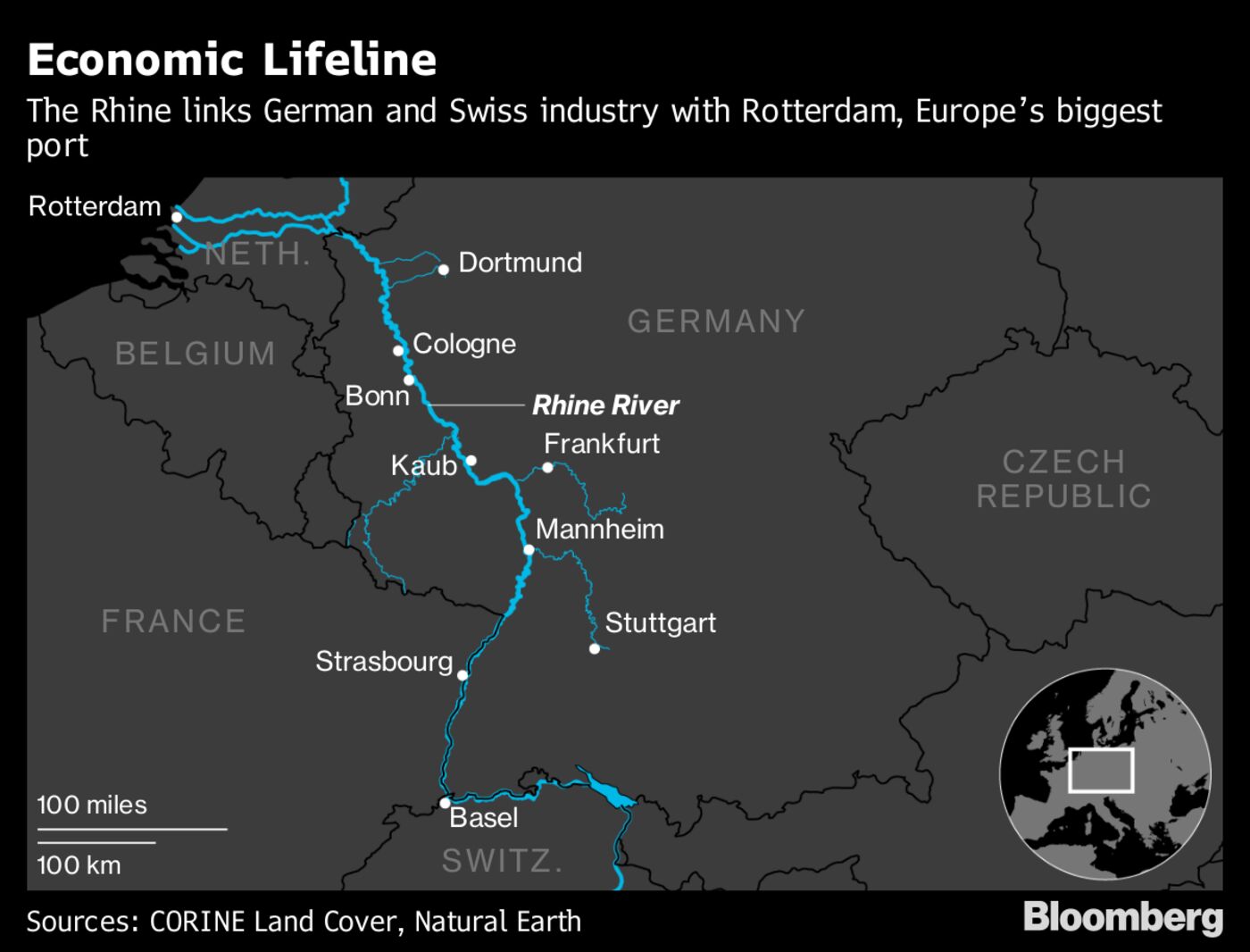Germany’s Rhine River is entering dry summer months with water levels at their lowest in two decades, prompting fears of shipping disruption on Europe’s most important inland waterway. After spring showers failed to show in Germany, the official water level at Kaub — a key chokepoint near Frankfurt — dropped to around 1 meter on June 3, its lowest for the time of year in at least two decades, according to Germany’s WSV inland waterway agency.
That’s prompting fears of a repeat of disruption seen in 2018 when waters fell so low the river became impassable to industrial ships, severing downriver factories from North Sea ports. With its source high in the Swiss Alps, the Rhine snakes more than 800 miles (1,300 kilometers) and carries cargo barges through some of Europe’s most important industrial zones before emptying into the North Sea at Rotterdam.

A mix of glacial run-off and rain feeds the river, but contributions from glaciers have dwindled in recent years as summer melting outpaces ice formation in winter thanks to global warming. Forecasters have warned that Europe faces a tinder-dry summer, conditions that would spark a repeat of an October 2018 impasse that was severe enough to dent German economic growth.
